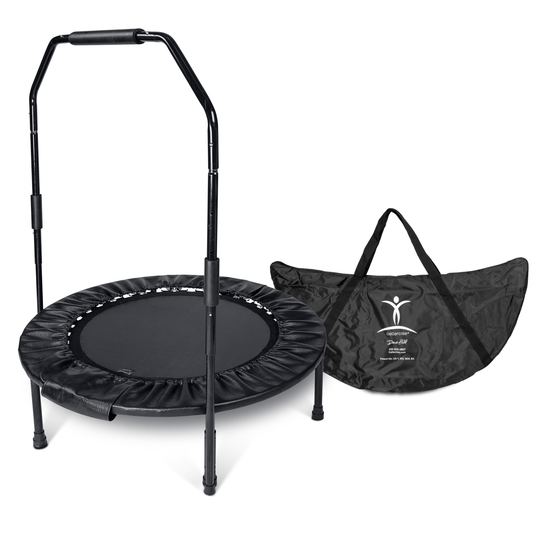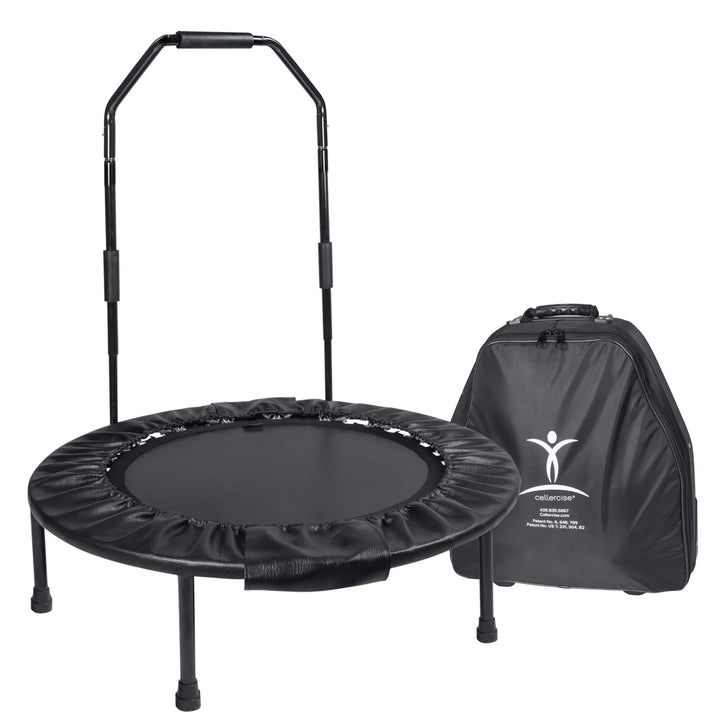Disclaimer: This Blog/Web Site is made available by the publisher for educational purposes only as well as to give general information & understanding regarding the industry. It is not to be used as specific medical advice or to replace consulting with your doctor. You should always consult with your doctor. By using this Blog / Web Site you understand that this Blog/Web Site should not be used as a substitute for medical advice from a licensed professional. For our full disclaimer, please read: Cellercise® Disclaimer
Hypertension and high blood pressure are serious health issues that can threaten your well-being. Proper exercise helps prevent and alleviate the symptoms of these conditions. Rebounding exercises are excellent for considerably lowering blood pressure by improving circulation and balancing your blood chemistry.
Understanding High Blood Pressure and Hypertension
High blood pressure can result from old age, genetics, and other health-affecting activities, such as smoking, over-consuming alcohol, eating high-sodium foods, and not getting enough activity on a regular basis. If you don’t take steps to control your blood pressure, you put yourself at risk for many health conditions, including:
- Heart attack
- Stroke
- Aneurysm
- Metabolic syndrome
- Dementia
High blood pressure occurs in part because the effects of lifestyle choices, processed foods, and other health factors alter the blood chemistry. Instead of being free-flowing, your blood cells start to stick together. As a result, your blood can’t travel through your veins with as much ease. To compensate, your body increases its blood pressure. Hypertension follows when someone has consistently high blood pressure that goes beyond normal levels. People with hypertension are at a much higher risk for negative health effects. When it comes to treating blood pressure issues, lifestyle changes are the first adjustments patients with hypertension should make. Regular exercise is an essential step to alleviating high blood pressure and taking care of your health.
How Rebounding Exercises Combat High Blood Pressure
Any form of aerobic exercise strengthens the heart and increases circulation throughout the body, and rebounding is one of the best ways to accomplish it. In as few as 10 minutes a day, rebounding offers a quick, enjoyable way to add a new exercise routine to your life and improve your heart health. Rebounding allows sticky blood cells to separate from each other, making it easier for the heart to move them through veins – ultimately decreasing blood pressure. As a result, blood cells also have more access to oxygen, allowing improved health and energy. Blood cells also become more flexible, which further contributes to these benefits. Blood clots and clogged arteries are other serious health conditions that can arise from sticky blood cells. Besides breaking apart clusters of cells, the increased circulation from rebounding can prevent artery hardening and the development of atherosclerotic plaque, as both contribute to blockages. As clogged arteries are the top degenerative disease, people need to look out for this issue as they grow older. When you balance your blood chemistry through rebounding, you counter all sorts of potential problems. Some people who suffer from high blood pressure and hypertension have conditions that resist medications; exercising is still effective for alleviating their symptoms. Regular rebounding, even when not combined with other lifestyle changes, can improve overall heart health and reduce pain. One of our favorite testimonials comes from a UPS driver, who found herself having difficulties with the physical strains of her job. She delivered a Cellerciser®, and curiosity led her to buy one for herself. After several months of using the Cellerciser®, without any other changes, she was free of pain, and her cardiologist noted a strengthened heart as well as improved overall health. Since rebounding is a low-impact aerobic exercise, even the elderly can complete these exercises with less trouble from pain or exhaustion. The improvements to balance and other energy- boosting effects make rebounding effective even beyond heart health. In fact, in an article from the Townsend Letter for Doctors, Dr. Morton Walker lists many additional benefits of exercising with the Cellerciser®, including:
- A strengthened heart
- Reduction in cholesterol and triglyceride levels
- Improved vision
- Relief from back pain, as well as other aches and pains
- Increased thyroid output
- Promotes a deeper sleep
- Stimulates learning and mental processes
- Eases PMS symptoms
- Improves immunity
- Slows the aging process
- Many more!
Building the Right Rebounding Routine to Reduce Blood Pressure
If you approach rebounding in the hopes of alleviating hypertension and high blood pressure, any exercise you do will start to give you the health benefits you need. All mini trampoline exercises work to increase your heart rate, which is the first stage to energizing your blood cells and balancing out your body’s chemicals. You may feel tempted to push yourself to achieve the results you want but overextending yourself will do more harm to your body – and your heart – than good. If you’re new to rebounding and regular aerobic exercise, then you need to build yourself up first. Start with five or 10 minutes of rebounding exercises per day, and steadily increase your time over a period of several days or weeks as you adjust. Even this small amount of time will play a role in combating high blood pressure, and you’ll experience more benefits as you solidify your routine. The key is to stop whenever you notice yourself starting to feel exhausted and allow your body enough time to rest. Building up to 20 to 60 minutes of cardio three to five times a week is a good goal to set for yourself. Be sure to take your time when increasing the length of your rebounding workout, so your body has enough time to adjust. Drinking enough water is essential to prevent the negative effects of dehydration on your heart rate and blood pressure. The small size of rebounders allows you to set one up anywhere, even outside, plus you can watch television or talk on the phone while you’re rebounding. This flexibility allows you to fit rebounding into your schedule, anywhere and anytime.
Potential Risks
While rebounding is an excellent way to reduce blood pressure and increase circulation, there can be some risks. Poor circulation and blood clots can make aerobic exercises dangerous by preventing the body from providing appropriate blood flow. This is yet another reason you should start small and steadily build endurance. People with blood pressure higher than 180/100 are especially at risk for these potential issues with cardio exercising. If you fall into this category, you should discuss the prospect of beginning rebounding exercises with your doctor before doing so. Your doctor can tell you if rebounding is suitable for your condition and help you develop a safe exercise plan that won’t worsen your condition. With the simple exercises that are accessible for all ages, it’s easy to start alleviating the symptoms of hypertension and high blood pressure through rebounding. With fun and engaging routines that allow flexibility in your daily routine, a rebounder may be just what you need to increase blood flow, reduce the risk of clogged arteries, balance your blood chemistry, and improve your cardiovascular health.
NOTE: Remember to always consult with your doctor or health professional before starting new exercise routines.
Get Your Cellerciser® and start rebounding today!














